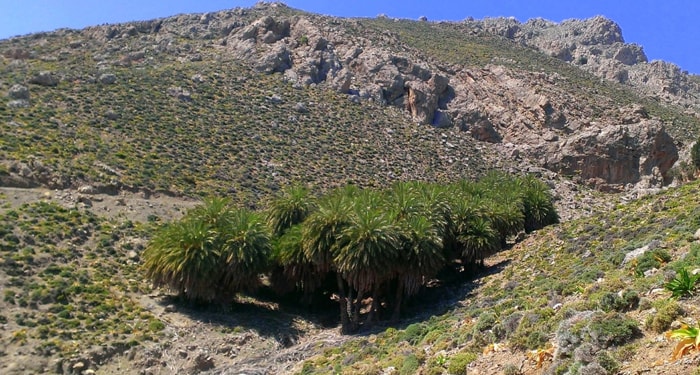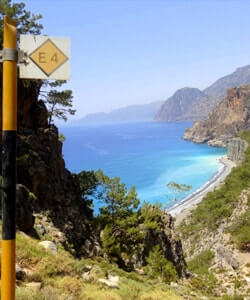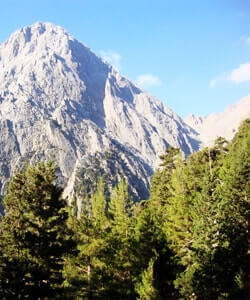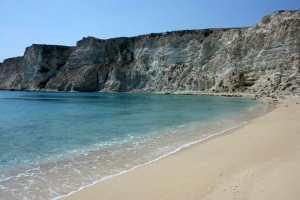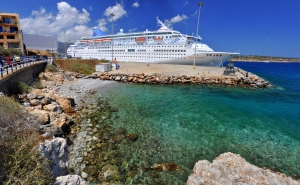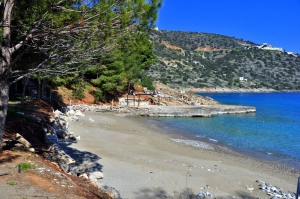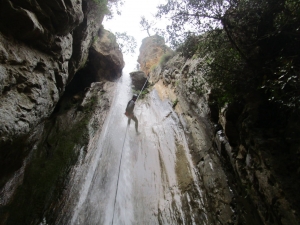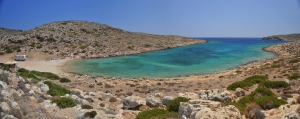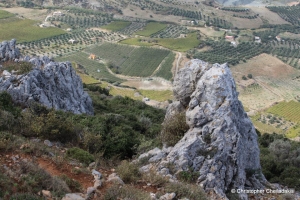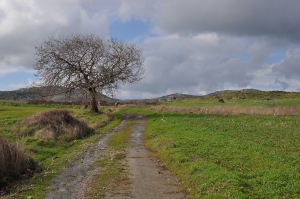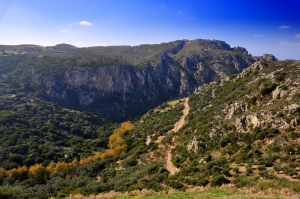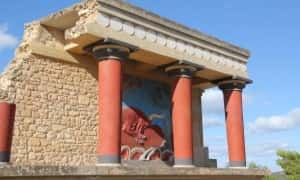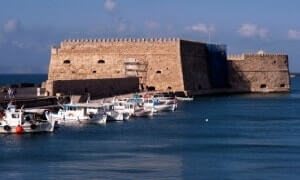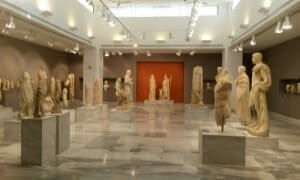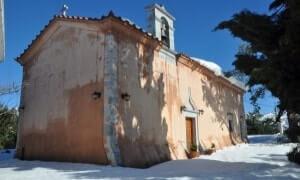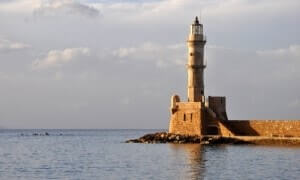In the southeastern part of the magic island is formed Chiliaderfia Bay with 4 beaches and 2-3 islets colored by the characteristic white color of the rocks of the area, which in ancient times gave the island its name Lefki (i.e. white). All beaches have shallow water, as clear as anywhere in Crete, and fine golden sand.
Next to the port of Agios Nikolaos you’ll find the tiny pebble beach of Akti Themistokleous street, next to the sculpture of Nikos Koundouros named "The Rape of Europe".
The last beach north of Agios Nikolaos, on the way to Elounda, is the beach of Katsikia (i.e. goats). The area is named after the many goat pens in the past. Similarly, Agios Nikolaos town was called Mantraki that means goat pen. Katsikia host a nice sandy beach with stones in a places, well hidden in front of the hotel Candia Park. To get there you should walk either across the hotel or around it.
The gorge of Goula is located south of the village Kapetaniana and ends at Agios Ioannis seaside settlement. Like the two other gorges of the area (Koumos and Gerakia) it is impassable without canyoning equipment
Here are some sandy bays away from prying eyes, while generally the rocky bottom is maybe the richest in the island, attracting many fishermen from all over Crete. It generally very windy and you will almost always see windsurfers. The west bay is called Tenda and is open to west winds and wavy, while the east is called Eligas and sea surface is usually flat.
Climbing on Giouchtas is very easy because there is a very nicely marked and visible trail that crosses the mountain from one side to the other. Giouchtas has amazing and unobstructed views towards all directions, although it is quite low (its highest peak reaches 811m altitude). The trail that crosses the mountain starts right next to very famous archaeological site of Anemospilia and ascends to the south having panoramic views across the north side of the city of Heraklion, the Cretan Sea.
Amari valley is formed between the Mountains Kedros and Psiloritis, at an altitude of 400-500m and is 25km long. It is the natural passage from the north to south Rethymno and Messara Plain. For its central location, it was the theater of several historical events, especially during the Ottoman rule.
On the way to Elafonisi from the road running along the west coast of Crete, there is the beautiful village of Cambos belonging to Kissamos province. From there a short dirt road heads to the west which heads to the lush canyon of Kambos, the westernmost gorge of Crete.






